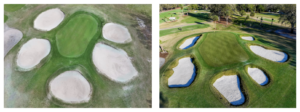
When we first visited Sand Valley in Nekoosa, Wisconsin for the first time in June of 2017, the destination was just beginning to make it’s way into the consciousness of the passionate traveling golfer. Back then, the only 18 holes that were open was the original Coore/Crenshaw course, and six preview holes of Kidd’s Mammoth Dunes (available that summer for preview play). The clubhouse and lodge had literally just opened. Today, Sand Valley Golf Resort offers five courses – Sand Valley, Mammoth Dunes, Sand Box (short course), Lido and Sedge Valley . . . in less than a decade, Michael and Chris Keiser have done a masterful job of following their patriarch (Mike Keiser) and expanding the Dream Golf empire beyond Bandon Dunes. Not only have they learned how to construct a world class destination for those who appreciate worthy golf architecture, they have paid very close attention to the small details that make an experience a memorable one (and worth returning for).
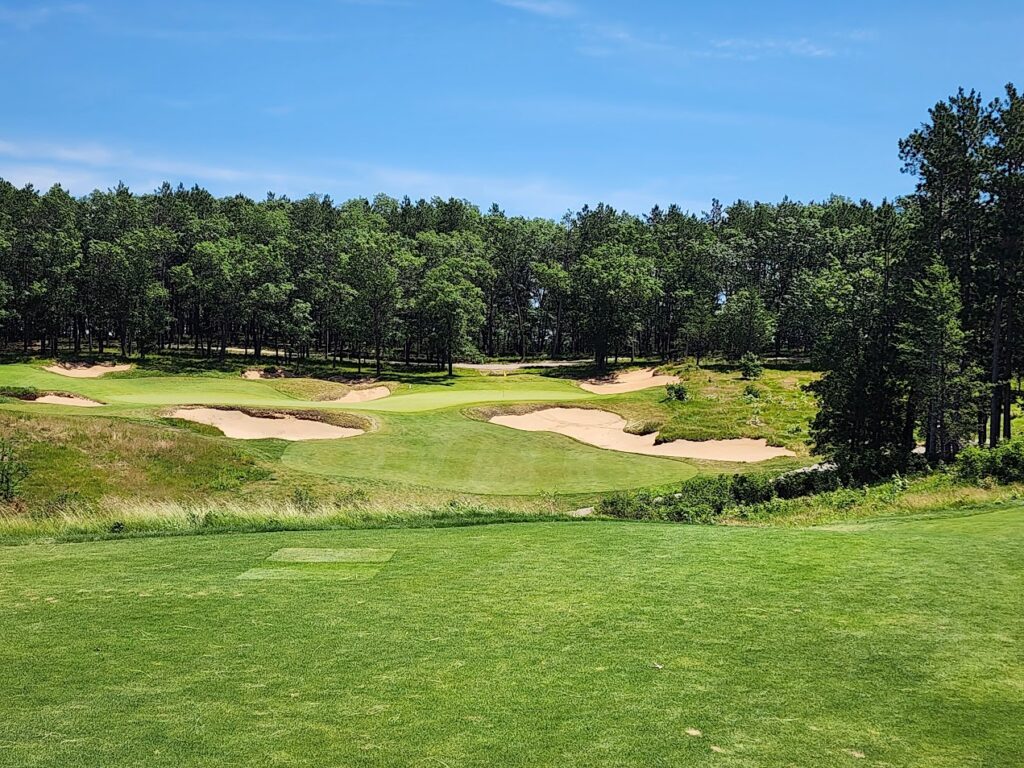
Sedge Valley is a completely different vibe and flavor than it’s brethren . . . this is not a layout that favors those that swing out their shoes with little regard for position and strategy. It plays 5,829 yards as a par 68 with just one par five. The forward markers play at mere 3,753 yards. At these yardages you’d expect Sedge Valley to be a niche part of the portfolio, a pushover that better players would have little use for. Quite the contrary, in all likelihood Sedge Valley will become the resort’s most popular course. Yes, Doak allows ample room off the tee box, but position and strategy rule here. Why? Because the green designs lend themselves to those who can hit shorter irons with distance control, the proper trajectory, and can master when to add or take spin off a shot. And who doesn’t enjoy figuring out how to get a flighted gap wedge or 9 iron close to a well guarded hole location, as opposed to trying to hit a high 4 iron and stop it on a firm surface? I’ll let Tom Doak explain it himself, “The first two courses at Sand Valley are among the biggest, widest courses ever built. They invite you to swing away, but you seldom think of the word “finesse” to describe them. My idea for Sedge Valley is to bring back a more intimate scale and build classically styled holes that everyone can enjoy, but which may require some compromises from the long and wild hitter.”
Doak expands on his inspiration for the design at Sedge Valley: “Harry Colt did hundreds of great courses on all types of property, including heathland and links courses, and he was one of several designers whose best work remains relevant, interesting and challenging. The inspiration for Sedge Valley comes from a handful of courses that never expanded much beyond their original scope – Colt’s Swinley Forest and Rye, Sir Guy Campbell and C.K. Hutchison’s West Sussex, Woking by Tom Dunn, The Addington by J.F. Abercromby, and Tom Simpson’s New Zealand Golf Club. These are designs that have remained essentially unchanged over time. I can’t think of a higher standard.”
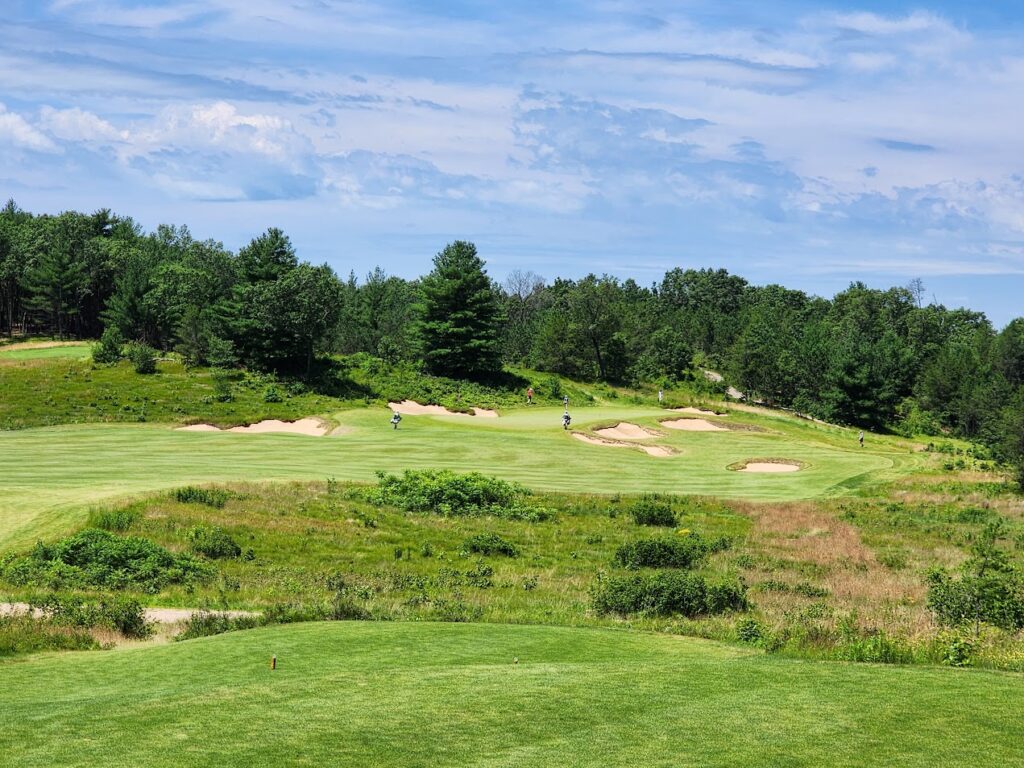
Sedge is a masterclass from Tom Doak on how you can create intrigue, challenge, and fun, by removing distance as the main component and emphasizing the importance of accuracy and greenside creativity. On several holes the surrounds give you options via playing along a contour that will feed the ball towards a hole location, and conversely several where the intelligent strategy is to simply play away from a certain pin. In some cases, firing at the flag may be too enticing to pass up, but just may be “fools gold”.
Tom Doak gives his thoughts regarding the unique green site designs at Sedge Valley and in particular the magnificent drivable sixth hole:
When you don’t have to think about stretching a course to 7,300 yards, you can start thinking about finding cool green sites, without worrying about how close together they are. The sixth at Sedge Valley is a 290-yard par-4 with a skinny shelf of a green. It’s the kind of hole that actually gets long-hitters into trouble because they feel compelled to attack even when it’s not wise. That freedom from length also means that back-to-back par-3 holes are fine, provided they’re different. The seventh and eigth at Sedge Valley will be 119 yards and 143 yards, respectively.
So the overall design does allow us to focus more on the green sites themselves. I don’t have to worry as much about a severe slope at the edge of the green being “unfair” if you’re hitting a relatively short approach into it. You look for great green sites. We found them here, and it’s a credit to Michael and Chris that they have allowed us to build around those great sites.
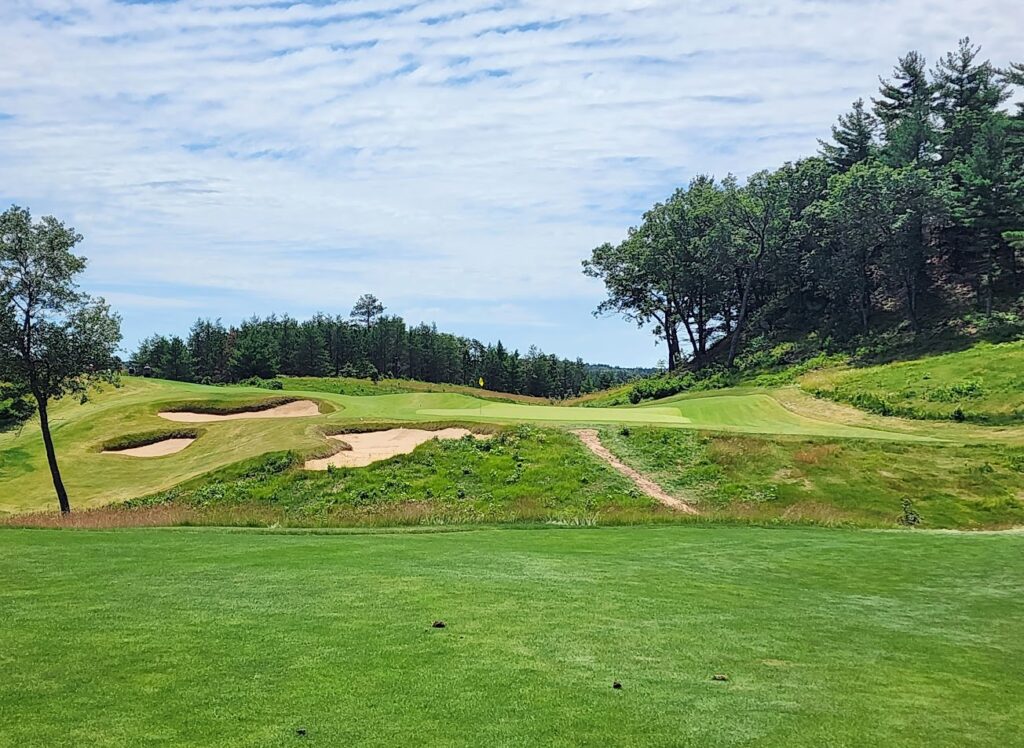
Summary: Perhaps the biggest compliment you can pay to a golf course other than, “I remember every hole, and when can we play it again”, for me, is the walk. The natural heathland like landscape and environment will have you feeling like you’ve been dropped into Surrey, England. And for someone who lives in an area with a ton of golf redundancy, I’m not sure I’ve felt anything quite like it here in America, and none of that has anything to do with the birdies and bogeys side of the experience. On the architectural side of the ledger, there’s a vital element at Sedge Valley that also resonates in glowing terms . . . there are constant choices to be made throughout the round, and picking the correct one that suits your individual skill set will likely be rewarded with a chance to make something good happen. The design provides that in spades, and it’s hard to imagine a better golf concept than that. Don’t be cynical because of the yardage, Sedge Valley is a must play.
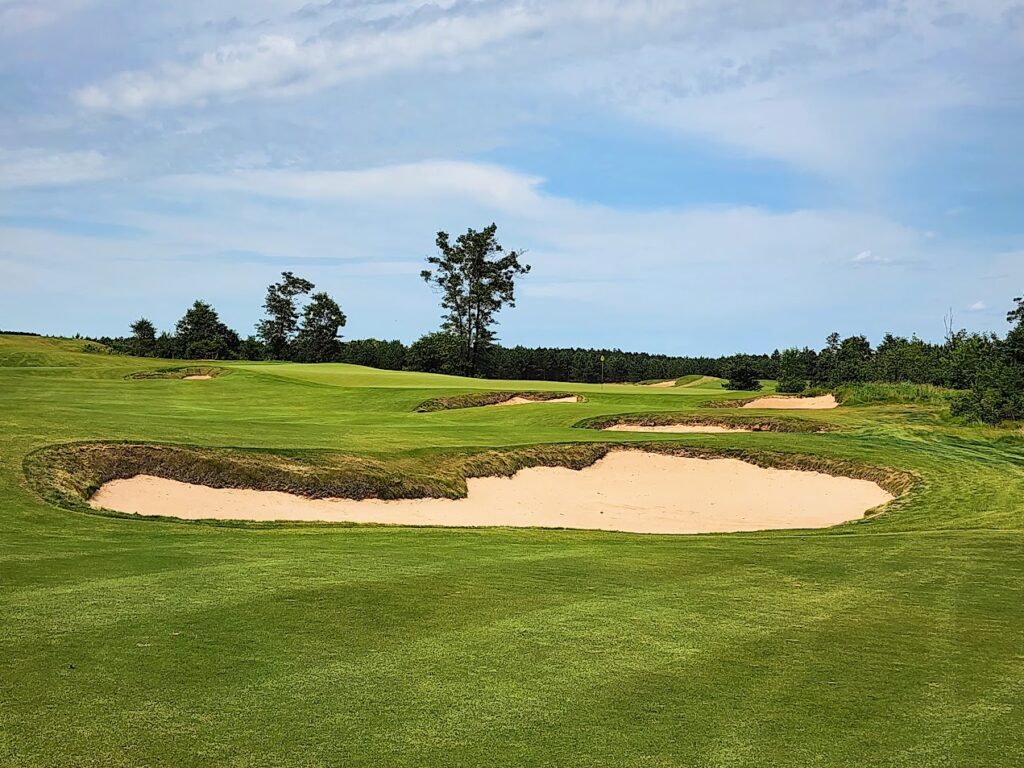
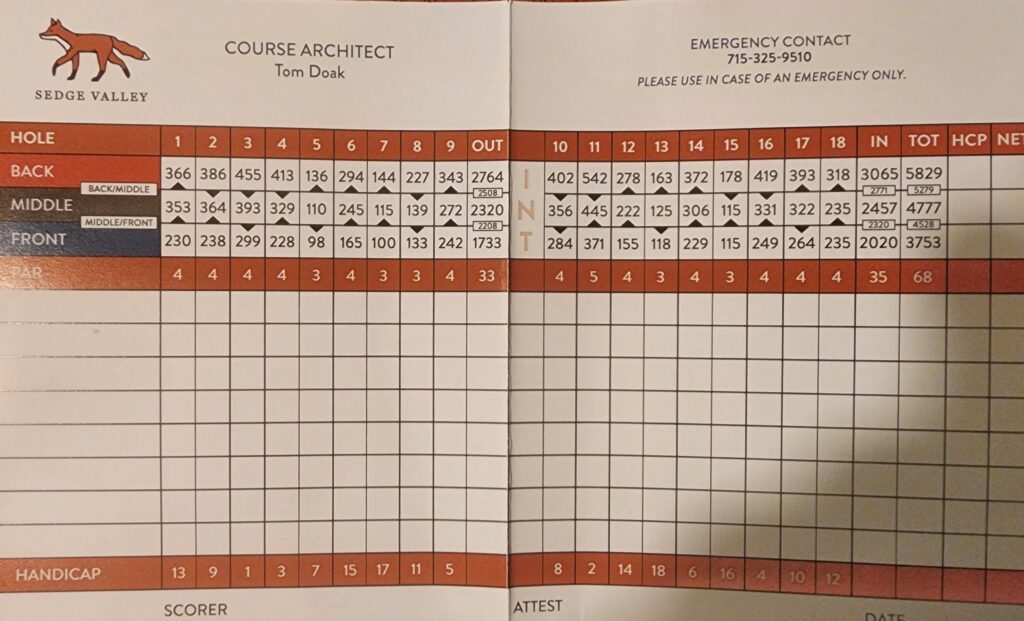
For more info on Sedge Valley and the other courses at Sand Valley: https://sandvalley.com/


